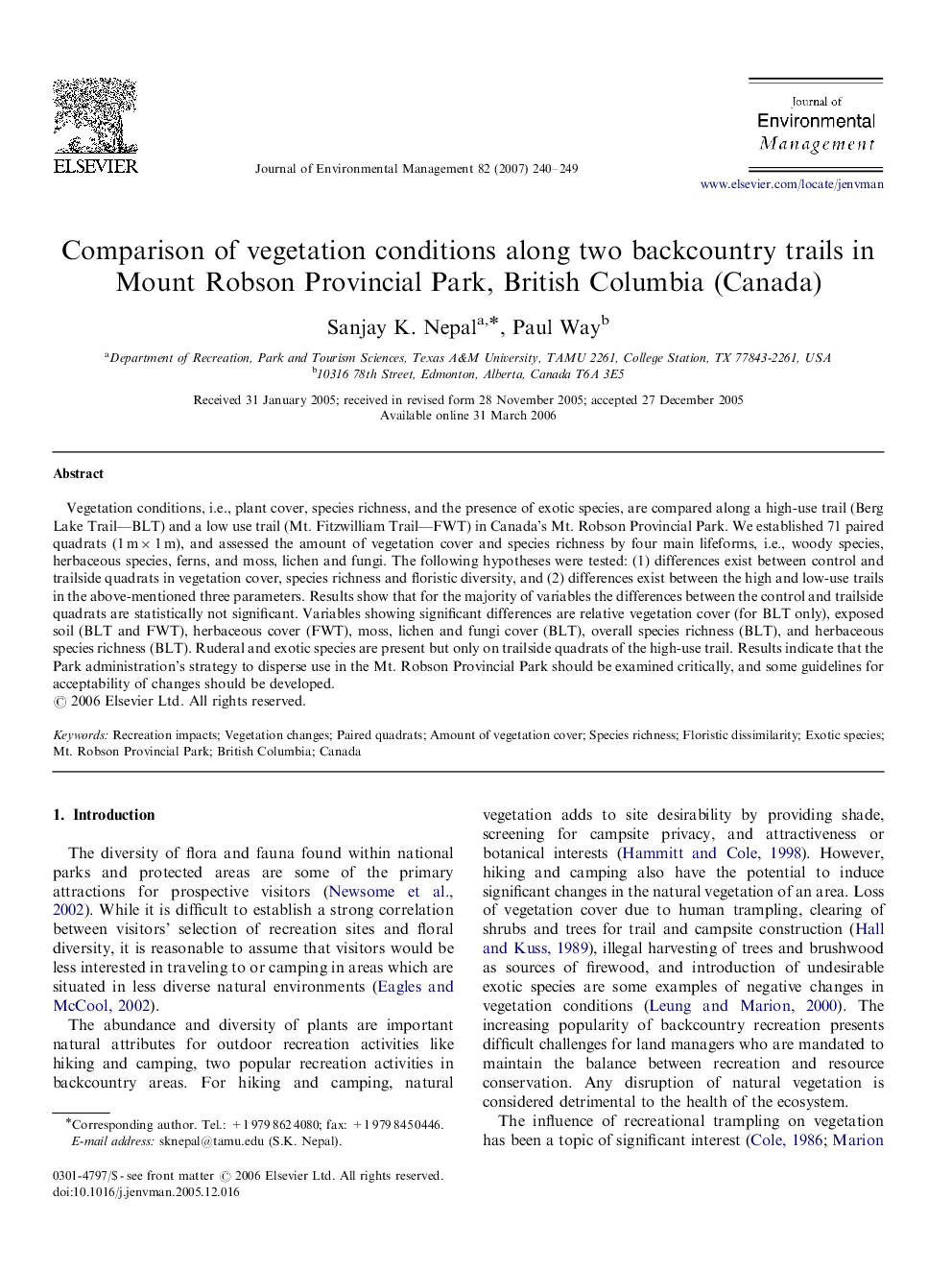| Article ID | Journal | Published Year | Pages | File Type |
|---|---|---|---|---|
| 1057893 | Journal of Environmental Management | 2007 | 10 Pages |
Vegetation conditions, i.e., plant cover, species richness, and the presence of exotic species, are compared along a high-use trail (Berg Lake Trail—BLT) and a low use trail (Mt. Fitzwilliam Trail—FWT) in Canada's Mt. Robson Provincial Park. We established 71 paired quadrats (1 m×1 m), and assessed the amount of vegetation cover and species richness by four main lifeforms, i.e., woody species, herbaceous species, ferns, and moss, lichen and fungi. The following hypotheses were tested: (1) differences exist between control and trailside quadrats in vegetation cover, species richness and floristic diversity, and (2) differences exist between the high and low-use trails in the above-mentioned three parameters. Results show that for the majority of variables the differences between the control and trailside quadrats are statistically not significant. Variables showing significant differences are relative vegetation cover (for BLT only), exposed soil (BLT and FWT), herbaceous cover (FWT), moss, lichen and fungi cover (BLT), overall species richness (BLT), and herbaceous species richness (BLT). Ruderal and exotic species are present but only on trailside quadrats of the high-use trail. Results indicate that the Park administration's strategy to disperse use in the Mt. Robson Provincial Park should be examined critically, and some guidelines for acceptability of changes should be developed.
